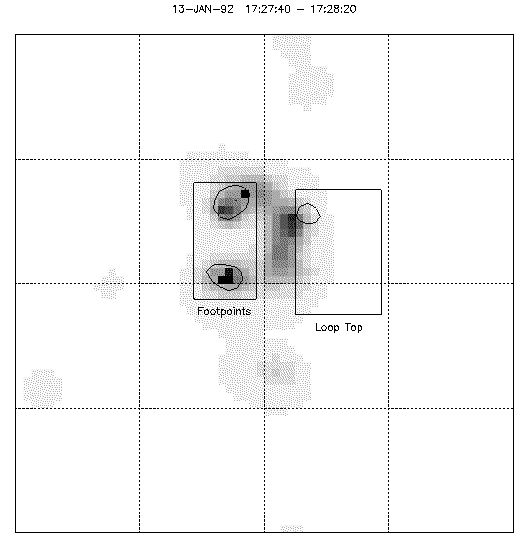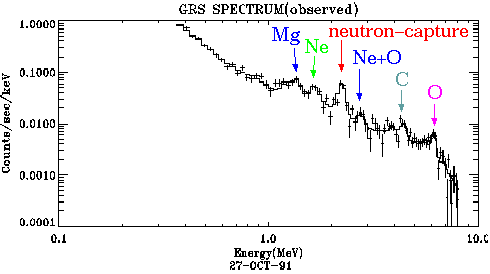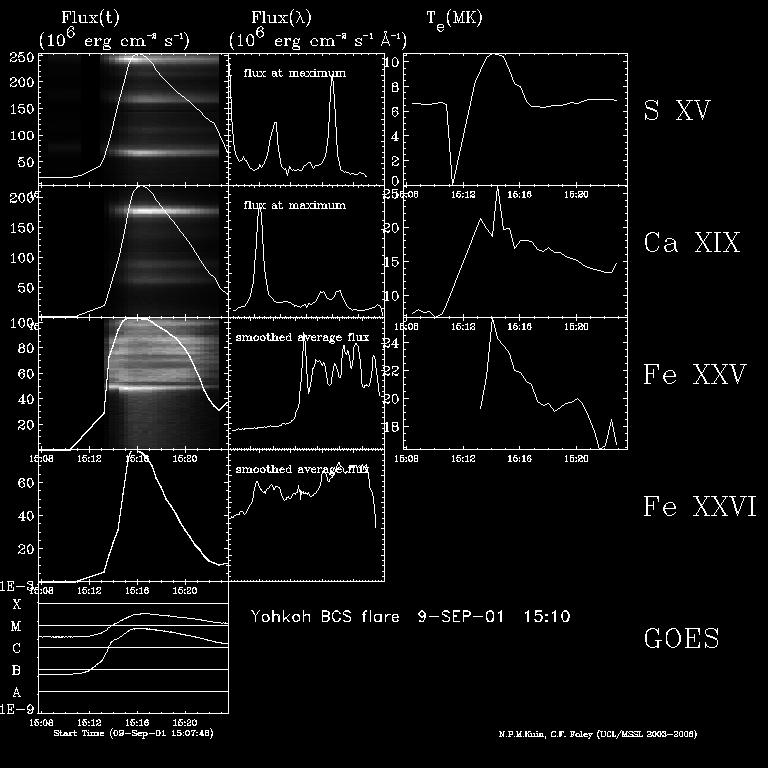
 |
About Yohkoh > this page |
There are four instrument packages on Yohkoh: the Soft X-ray Telescope (SXT), the Hard X-ray Telescope (HXT), the Wide Band Spectrometer (WBS), and the Bragg Crystal Spectrometer (BCS). A brief description of these four instruments is available. For more information about the Yohkoh mission, try the Yohkoh Public Outreach Project, and the Yohkoh/SXT Homepage.
| SXT:
The Soft X-ray Telescope produces full-
and partial-Sun images like the example at right.
Web-accessible data are primarily in the form of digital whole-Sun images,
at a cadence of one image per day, for dates spanning the
entire Yohkoh mission.
Example movies can be downloaded here, and daily SXT images(1996 -2001) can be accessed here. |
 |
| HXT:
The Hard X-ray Telescope
images solar flares in hard X-rays. HXT images are often used in
conjunction with partial-Sun SXT images, as in the image at right.
HXT images are not currently available on-line.
Flare light curves in hard X-rays are readily prepared from HXT data.
Click here for a light
curve of the flare in the image at right.
HXT flare light curves are published in The Yohkoh HXT Databook, by the National Astronomical Observatory of Japan. A catalogue of flare events observed by HXT is available in here. |
 |
| WBS:
The Wide Band Spectrometer
comprises a set of three non-imaging detectors that measure soft X-rays,
hard X-rays, and gamma rays. The output from WBS is a set of simultaneous
time-resolved spectra. Example data from WBS appear at right. WBS light
curves and spectra can be readily prepared from the raw data.
A catalogue of gamma-ray flare events observed by WBS(HXS/GRS) is available in here. |
 |
| BCS:
The Bragg Crystal Spectrometer is a high-resolution spectrometer
for X-rays. It views the
whole Sun with four bent germanium crystals, observing the 10
to 50 million K plasma created in
solar flares.
A catalogue of flare events observed by BCS is available in here. |

|
